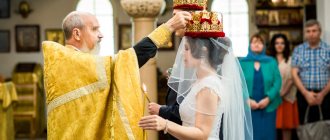Source of faith in Orthodoxy
The authority of the Holy Scripture sanctifies the Traditions; they are mentioned more than once in the Bible, in particular, in the New Testament, the Apostle Paul in his address:
- to the inhabitants of Thessalonica he spoke about the tradition received through the Word (2 Thess. 2:15);
- in Corinth he praised Christians for being faithful to the messages conveyed through a follower of Christ (1 Cor. 11:2);
- Timothy was instructed to keep what he heard (1 Tim. 6:20)
Christian doctrine draws knowledge from two sources - the Holy Scriptures and the Holy Revelation, transmitted from their past.
The Holy Scriptures contain all the dogmatic truths of the Christian Church.
The Holy Scriptures could not contain everything that Jesus taught, nor describe all of Christ’s actions and words. The Church initially appeared on the basis of Old Testament Traditions; Scripture became the guardian of faith and truth. The spiritual life of the Church is organized by the apostles. They, by the Holy Spirit, conveyed revelations and letters to the Holy Church, orally and in writing, about the conduct of the Christian way of life, its rules, and mysterious sacred rites.
The apostles, through their disciples, shepherds of new churches, conveyed revelations in which Orthodox wisdom was preserved. Modern Christians should approach all the messages conveyed by the apostles orally and in writing with a devoted heart, faith in the mysteries hidden by the Holy Spirit.
Read about the holy apostles:
- Apostle Thomas
- Holy Chief Apostle Peter
- Life of the Apostle John the Theologian
How to determine whether a tradition is apostolic?
True apostolic tradition is recognized as that which does not contradict and is consistent with the Holy Scriptures and other undoubted apostolic traditions, and, moreover, dates back historically to the times of the apostles and existed in the churches founded by the apostles. If no ancient sources have been preserved that could attest to the apostolic origin of any tradition, then the testimony of the fathers and teachers of the Church of the 3rd, 4th, 5th centuries is considered sufficient grounds for recognition, if all or many of them considered a certain tradition to be apostolic; especially what the whole Catholic Church adheres to.
What is the inner meaning of spiritual continuity?
Externally, the Christian world changed due to historical events, but the internal continuity of Orthodoxy was never interrupted. From century to century, Orthodox believers have carried a certain spirituality of antiquity, maintaining a certain immutability. Thus, during the Sacrament of Baptism, a person is plunged into water three times, newborns are brought to churches, the deacon is proclaimed during the service; “Doors! Doors,” in memory of the time when the family service was open only to Christians.
The Creed remains unchanged throughout the ages. The Orthodox Church preserves the teachings of the Lord, remaining faithful to the faith given to us by the Savior, remembering the grace of Christ.
The message of John of Damascus speaks of the immutability of the boundaries of Orthodoxy and the preservation of revelations, beliefs, and customs.
Christian traditions, transmitted through the apostles, mean biblical scriptures, creeds, holy images, observance of canons and letters of saints. Christians preserve the patristic riches, seeing this as a duty to future generations. Examining the heritage from the past, you can see that there is no equivalence between those messages.
Important! The Creed and the Bible remain the most valuable message from the moment of their appearance, every letter in them remains unchanged without the right of revision or cancellation, not a single message of the Holy Fathers is incommensurable with the Gospels.
Jesus called himself the truth, but not traditions and rituals. There is no unity between traditions and messages, this should be taken into account when talking about the past. For Christians of the 21st century, it is important to preserve the Orthodox heritage, sharing the Holy Tradition and rituals.
Old Believers build their faith on extreme conservatism, not allowing any deviations in rituals; modern Orthodox Christians can make compromises that undermine the authority of the true teachings, preserved since ancient times.
Today's Orthodoxy, based on contacts with Western churches, can appreciate the need for its own heritage. In fidelity to tradition, the main thing is to see not the process of automatism or mechanical repetition, but the transmission of wisdom borrowed from the past.
The Holy Fathers in their writings gave interpretations of the Holy Scriptures
Thinkers of modern Orthodoxy must have the ability to discern the inner essence of the transmitted church message in order to feel its Christian spirit so as to rediscover the meaning of Christianity.
True tradition is born from a personal meeting with the Savior and the Holy Spirit; it is not just protected by Orthodoxy, it is the existence of the Holy Spirit in the present tense.
The doctrinal formulations of the Ecumenical Councils are still valid today, but a new Council is possible, which will enrich the traditions with new designations of faith.
According to Georgy Florovsky, traditions are alive by the testimony of the Holy Spirit in the continuous preaching of the Truth, which is Jesus Christ. Only churchgoers living in the presence of God's grace can correctly understand messages from the past. The richness of the past has value not in remembering the letter, but in fidelity to the Holy Spirit for the growth and revival of the Church and Orthodox believers.
The Gospel of John says that only by the Spirit of truth can the truth be known. (John 16:13), the statement can be considered the basis of Christian fidelity to the messages of the past.
On the meaning of the expressions “Apostolic Tradition” and “Holy Tradition”
These expressions can be viewed in theology in different ways. Thus, Apostolic Tradition may mean Tradition acquired by the Church directly from the Apostles. This is the narrow meaning of the expression in question. In this case, it is not identical to the expression “Holy Tradition”, understood broadly. On the other hand, given that Sacred Tradition in a broad sense corresponds to the apostolic teaching and the saving apostolic experience in spirit, it is also permissible to designate it as Apostolic (in this case, the expression “Apostolic Tradition” is given a broader meaning).
Expression of legend in external forms
According to external forms, the Holy Tradition includes:
- Bible;
- Symbol of faith;
- Seven Ecumenical Councils;
- later Councils;
- messages of the Holy Fathers.
Bible
The Orthodox Church is based on Holy Scripture, which cannot in any way be separated from Holy Revelations. The Bible describes the entire path from the creation of the world, the birth of the people of God, the arrival of the Mission on earth and the beginning of the first apostolic churches. The Bible cannot be considered separately from the Church, and the Church cannot exist without Holy Scripture.
Through the instructions of the Church, Christians can find interpretations of unclear passages in the Bible
The New Testament is unchanged for the whole world, but Orthodoxy accepts the Old Testament texts according to the Greek translation in the Septuagint. There are some differences in the Hebrew and Greek translations, but Orthodoxy is confident that the text in the Septuagint was written under the guidance of the Holy Spirit.
Read about the Bible:
- Lopukhin's Explanatory Bible
- Prophecies from the Bible
- 15 Interesting Facts About the Bible
The Hebrew version of the Old Testament contains 39 books, and the Septuagint recognizes ten more, known in Orthodoxy as Deuteronomy. True Christianity is based on a conscientious study of the messages; in Orthodoxy there is no prohibition on a critical attitude towards certain historical events described in the Holy Epistles.
The importance of the Bible in worship cannot be understated. The book “Psalter” is read out every day; with morning and evening reading, 151 psalms are read in seven days. The Gospel is the culminating moment during Matins, on Sundays, and holidays. Throughout the year, all texts of the New Testament are read at services, not including Revelation.
Divine services are constantly resounding with the singing of Old Testament hymns; the prayer “Our Father” is heard in churches during church services. Liturgical texts are written based on quotations from the Old and New Testaments.
Important! For Orthodoxy, the Bible is a verbal icon of Jesus Christ. According to the decree of the Seventh Ecumenical Council, holy images and the Gospels should be equally venerated.
Symbol of faith
The indisputable authority for the Orthodox is the creed established by the Seven Ecumenical Councils.
Prayer symbol of faith text in Russian
- I believe in one God, the Father, Almighty, Creator of heaven and earth, of everything visible and invisible.
- And in one Lord Jesus Christ, the Son of God, the Only Begotten, begotten of the Father before all ages: Light from Light, true God from true God, begotten, not created, one being with the Father, by Him all things were created.
- For the sake of us people and for the sake of our salvation, he came down from heaven and took flesh from the Holy Spirit and the Virgin Mary, and became a man.
- He was crucified for us under Pontius Pilate, and suffered, and was buried.
- And rose again on the third day, according to the Scriptures.
- And ascended into heaven, and sits at the right hand of the Father.
- And He will come again with glory to judge the living and the dead; His Kingdom will have no end.
- And in the Holy Spirit, the Lord, the giver of life, who proceeds from the Father, worshiped and glorified with the Father and the Son, who spoke through the prophets.
- Into one, Holy, Catholic and Apostolic Church.
- I recognize one baptism for the forgiveness of sins.
- I look forward to the resurrection of the dead.
- And the life of the next century. Amen (truly so).
Not a single Midnight Eucharist or Vespers is celebrated without the singing of the Creed, the task of which is to affirm the apostolic faith. In Orthodoxy, both the Apostolic and Athanasian symbols are venerated, but they are not used in worship.
The Creed was adopted by the Second Ecumenical Council in 381
All formulations of doctrines in Orthodoxy are adopted at councils; after the Council of Nicea in 787, at the level of local associations of patriarchs and letters of individual bishops, the Church could introduce new definitions. At the same time, the acts of the Ecumenical Council are not subject to revision; they are adopted in their entirety, without any amendments.
Traditions of the Holy Fathers of the Church
In order to avoid heresy and wrong opinions, one should compare the Holy Scriptures with Church Tradition.
At the beginning of the new era, Apostolic letters appeared that described the sacred sacraments; they were kept secret from the non-Christian world. Baptism and the Eucharist were performed secretly, no one wrote down the ritual actions, the procedure was transmitted orally.
According to the recommendation of Saint Theophan, Christians need to study the works of the Fathers of the Church. Beginning believers can draw knowledge and strength of faith from the lives of the saints, and perfect Christians can already use the Holy Scriptures.
The Holy Gospel underlies the patristic epistles, which describe the road to receiving salvation. Every believer, in whose heart the fire of knowledge and desire for internal changes burns, will find instructions in the messages of the Fathers of the Church.
Advice! To improve their own spiritual life, believers need to study the exploits of the ascetics of Orthodoxy. In the works of the righteous there are treasures of teachings about salvation; messages from the depths of centuries should not only be read, but also applied in modern Christian life.
When quoting the holy fathers, one should ask God for wisdom not just to pronounce words, but to be imbued with the patristic way of thinking, so that in the righteous people of yesteryear one can see a prototype of a modern Christian.
The fourth-century authors, known as the Three Saints in Basil the Great, Gregory the Theologian, and John Chrysostom, are especially revered in Orthodoxy. At the same time, in Orthodoxy there is no definition of the status of holy messengers or a table of the degree of their significance.
Orthodoxy emphasizes that the Fathers of the Church appear at all times
Along with John of Damascus, Gregory Palamas, Mark of Ephesus, new fathers may be born in the modern Christian world, because the Holy Spirit still lives in the Orthodox Church, passing on the apostolic traditions to their descendants.
The transmission of Sacred Tradition is inseparable from Liturgies, canons and holy icons.
Sacred Tradition and Traditions
Human traditions should be distinguished from Holy Tradition (see Matt. 15:1–20; Mark 7:1–23). Moreover, one cannot prefer the latter to the former. Anyone who rejects any church tradition, written or unwritten, as well as “the councils of the holy Fathers and their traditions, in agreement with Divine Revelation, and piously preserved by the Orthodox Catholic Church,” is subject to excommunication from the Church (10th anathematism of the Week of Orthodoxy).








